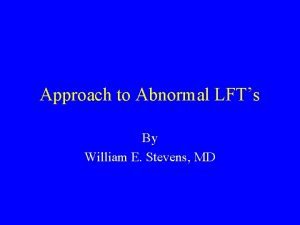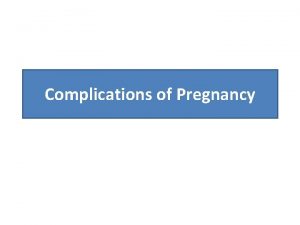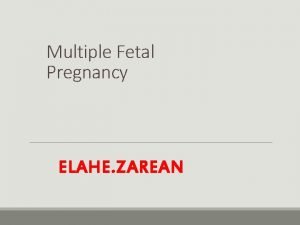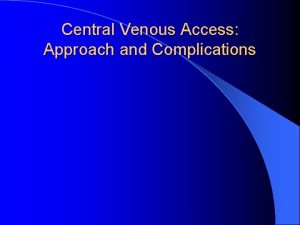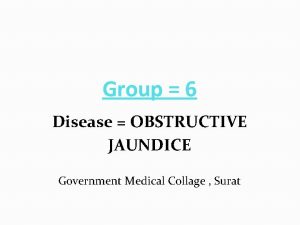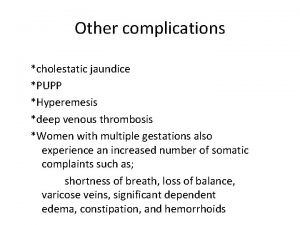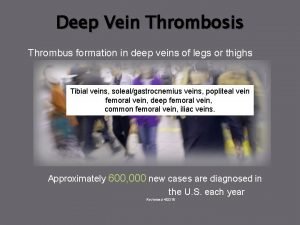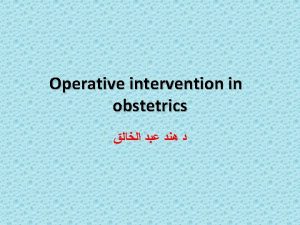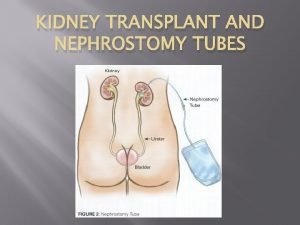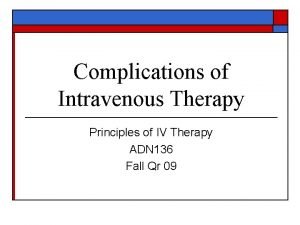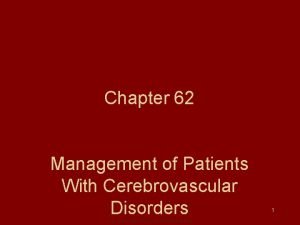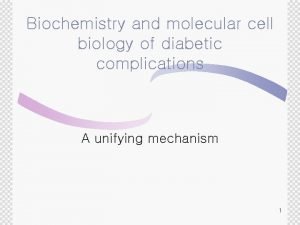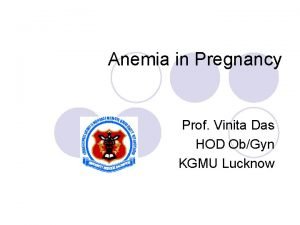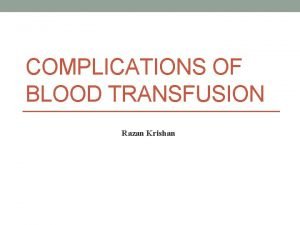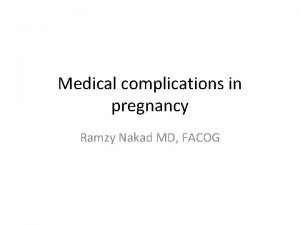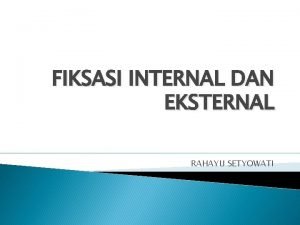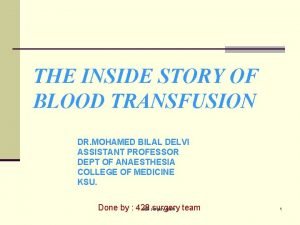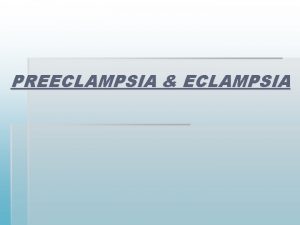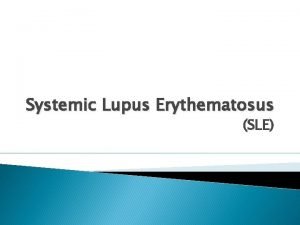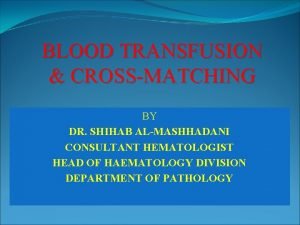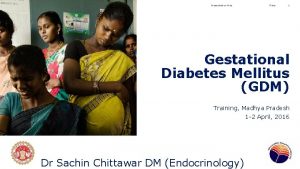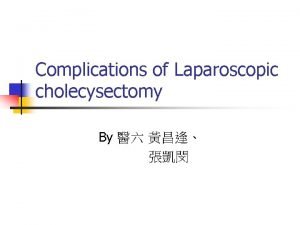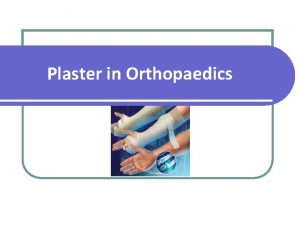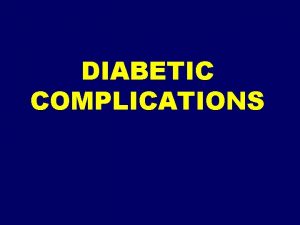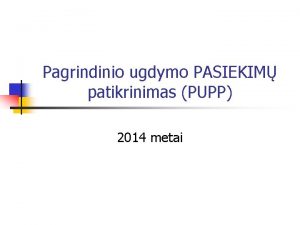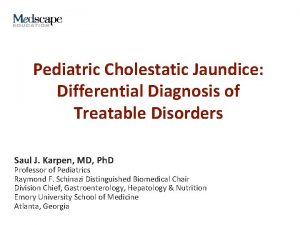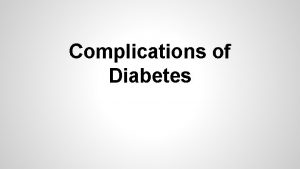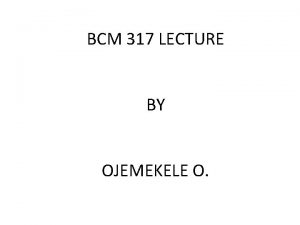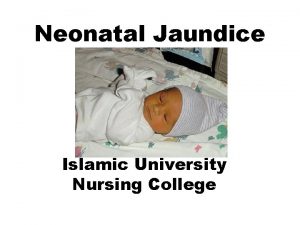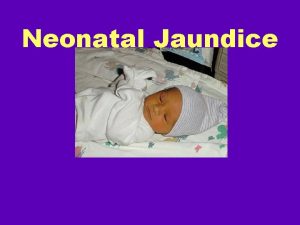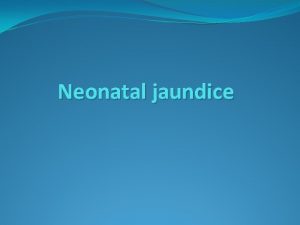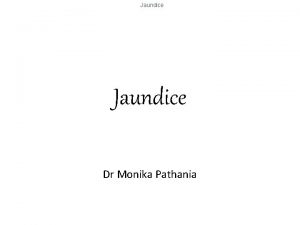Other complications cholestatic jaundice PUPP Hyperemesis deep venous






































- Slides: 38

Other complications *cholestatic jaundice *PUPP *Hyperemesis *deep venous thrombosis *Women with multiple gestations also experience an increased number of somatic complaints such as; shortness of breath, loss of balance, varicose veins, significant dependent edema, constipation, and hemorrhoids


Thanks for your attention

Complications Unique to Multiples *Vanishing Twin Syndrome *Fetal Death in Utero (Acute Intertwin Transfusion Syndrome) *Monoamniotic Twins *Discordant Twin Growth *Twin-to-Twin Transfusion Syndrome (Chronic Intertwin Transfusion Syndrome (

Vanishing Twin Syndrome Between 20% and 50% of multiple gestations identified by ultrasound in early pregnancy are lost either as a spontaneous abortion of all fetuses or by the spontaneous loss and reabsorption of at least one of the multiples.

In the experience of one in vitro fertilization program: first-trimester pregnancy loss rate was 50 of 165 twins (30. 3%), 11 of 26 triplets (42. 3%), and 1 of 5 quadruplets(20%)

symptoms *there usually are no symptoms *vaginal bleeding 5% of all patients with first-trimester bleeding

While vanishing twin syndrome occurs with a greater frequency than appreciated previously, it is important not to overdiagnose this event *subchorionic blood clots *chorioamniotic separations *decidual pseudosac *cystic uterine fibroid *excessive transducer pressure on a thin woman

Fetal Death in Utero *Acute Intertwin Transfusion Syndrome *After the first trimester, single fetal demise occurs in 2% to 5% of twin gestations and in 10% to 15% of triplet gestations *in a dichorionic gestation, the risk to the surviving cotwin is minimal *Antenatal demise of a monochorionic cotwin is associated with an approximate 25% mortality rate and a similarly high rate of morbidity for the surviving fetus.

definition Injury to the surviving cotwin is that following fetal demise, there is an acute transfusion into dead fetus through the shared placenta: - severe fetal hypotension hypoxic end-organ injury(most frequently neurologic ) - potentially lethal fetal exsanguination the -

management *dichorionic. L: no intervention *monochorionic: -maturity or near maturity: immediate delivery -earlier gestations: based on an assessment

Monoamniotic Twins *They carry a fetal mortality rate that approaches 40%, primarily as a consequence of cord entanglement and subsequent occlusion *they are at greater risk for other complications: -congenital anomaly -TTTS *Cesarean delivery is usually recommended


Discordant Twin Growth *birth weight differed by 500 to 999 g in 18% of twins, and the difference was greater than 1, 000 g in 3%. Some 15% to 30% of twins exhibit birth-weight differences of 20%. *Discordance between the largest and smallest triplet is 20% in more than 40% of triplet gestations, with 7% exceeding 40% discordance.

Etiology 1)constitutional factors such as the genetic dissimilarity of DZ twins 2)local placental implantation factors

It is important to appreciate that birth-weight discordance and IUGR are interrelated. When birth-weight discordance exceeds 20%, one of the fetuses will be growth restricted in more than 50% of the cases.

Evaluation *managed expectantly: - fetal well-being - absence of IUGR - presence of reassuring fetal testing *delivery: -20% to 25% growth discordance -IUGR of either twin at >=35 weeks gestation

Twin-to-Twin Transfusion Syndrome *Chronic Intertwin Transfusion Syndrome *It is a serious complication affecting multiple pregnancies and is sometimes referred to as chronic intertwin transfusion syndrome, a complication of MZ/monochorionic twins in which intraplacental arterial venous shunts are uncompensated and preferential blood flow exists


*donor twin: -growth retarded -anemic - hypotensive -oligohydramniotic !Stuck twin: If there is little or no amniotic fluid surrounding the smaller fetus, the amniotic membrane may lie in close apposition to the smaller fetus, restricting it to the uterine wal

*recipient twin: -hypervolemic - hyperviscous - hypertensive - polyhydramniotic due to increased renal blood flow *Either twin : hydrops

diagnosis *ultrasonographic criteria including: -Marked size disparity in fetuses of the same sex -Disparity in size between the two amniotic sacs -Disparity in size of the umbilical cords -A single placenta -Evidence of hydrops in either fetus -Findings of congestive heart failure in the recipient *Doppler ultrasound

Treatment *depending on the Quintero stage and the gestational age at which it is encountered *The option of delivery will depend on fetal maturity and the potential morbidity that would be encountered *At earlier gestational ages: -serial amniocentesis -tocolytic therapy -fetoscopy ! Viable patient: large volume-reduction amniocentesis ! previable patient: intrauterine laser ablation of placental surface vascular anastomoses, fetoscopic cord clamping, or termination


Fetal and Newborn Complications

Prematurity *The risk of preterm birth increases with the number of fetuses in utero and is the single greatest threat to the health of the newborns *Premature labor and PPROM are responsible for more than 70% of these premature deliveries *The incidence of preterm birth at less than 37 weeks gestation in the United States is 30% to 55% for twins, 66% to 80% for triplets, and virtually 100% for quadruplets *The mean gestational age at delivery is inversely related to fetal number: 39 weeks for singletons, 35 to 36 weeks for twins, and 32 to 33 weeks for triplets.

*Infants of multiple gestations account for approximately 20% of all NICU admissions. An admission to a NICU can be expected in approximately 25% of all twins, in 75% of all triplets, and in more than 90% of quadruplets. Respiratory distress syndrome occurs in approximately 14% of twins, more than 40% of triplets, and more than 60% of quadruplets.

the risk of dying before the first birthday is 5 times greater for twins and 14 times greater for triplets. Among survivors, the RR of severe handicap, controlling for both birth weight and gestational age is 1. 7 (95% CI 1. 6 to 2. 0) for twins and 2. 9 (95% CI 1. 5 to 5. 5) for triplets compared with singleton gestations.

Intrauterine Growth Restriction

• Complications Unique to Multiples

*Vanishing Twin Syndrome *Fetal Death in Utero (Acute Intertwin Transfusion Syndrome) *Monoamniotic Twins *Discordant Twin Growth *Twin-to-Twin Transfusion Syndrome (Chronic Intertwin Transfusion Syndrome (

Vanishing Twin Syndrome Between 20% and 50% of multiple gestations identified by ultrasound in early pregnancy are lost either as a spontaneous abortion of all fetuses or by the spontaneous loss symptoms *there usually are no symptoms *vaginal bleeding 5% of all patients with first-trimester bleeding


Fetal Death in Utero • After the first trimester, single fetal demise occurs in 2% to 5% of twin gestations and in 10% to 15% of triplet gestations • Definition: Injury to the surviving cotwin is that following fetal demise, there is an acute transfusion into the dead fetus through the shared placenta

Complications: - severe fetal hypotension - hypoxic end-organ injury(most frequently neurologic ) management *dichorionic: no intervention *monochorionic: -maturity or near maturity: immediate delivery -earlier gestations: based on an assessment

Monoamniotic Twins *They carry a fetal mortality rate that approaches 40%, primarily as a consequence of cord entanglement and subsequent occlusion *they are at greater risk for other complications: -congenital anomaly -TTTS


Discordant Twin Growth Some 15% to 30% of twins exhibit birth-weight differences of 20%. . When birth-weight discordance exceeds 20%, one of the fetuses will be growth restricted in more than 50% of the cases Etiology 1)constitutional factors such as the genetic dissimilarity of DZ twins 2)local placental implantation factors
 High ast and alt
High ast and alt Hyperemesis gravidarum criteria
Hyperemesis gravidarum criteria Twins parity
Twins parity Central venous line complications
Central venous line complications Obstructive jaundice differential diagnosis
Obstructive jaundice differential diagnosis Nec pupp
Nec pupp Dr pupp
Dr pupp Neislaikytas pupp
Neislaikytas pupp Neislaikytas pupp
Neislaikytas pupp Upper limb
Upper limb Common femoral vein
Common femoral vein Deep forest: towards an alternative to deep neural networks
Deep forest: towards an alternative to deep neural networks O the deep deep love of jesus
O the deep deep love of jesus Deep asleep deep asleep it lies
Deep asleep deep asleep it lies Self-initiated other-repair
Self-initiated other-repair Normal delivery stitches photos
Normal delivery stitches photos Neph tubes
Neph tubes Extravasation vs phlebitis
Extravasation vs phlebitis Trachestomy tube
Trachestomy tube Complications of hydrocephalus
Complications of hydrocephalus Stroke precautions nursing
Stroke precautions nursing Molecular cell biology of diabetic complications
Molecular cell biology of diabetic complications Complications of anemia
Complications of anemia Complications of insulin resistance
Complications of insulin resistance Complications of blood transfusion
Complications of blood transfusion Hypothyroid symptoms
Hypothyroid symptoms Deviated septum
Deviated septum Closed reduction internal fixation
Closed reduction internal fixation Platelet transfusion goals
Platelet transfusion goals Sumeet garg
Sumeet garg Eclampsia definicion
Eclampsia definicion What are the 11 criteria for lupus
What are the 11 criteria for lupus Complications c section
Complications c section Complications of blood transfusion
Complications of blood transfusion Lecture title
Lecture title Gestational diabetes complications
Gestational diabetes complications Abdominal insufflation complications
Abdominal insufflation complications Slab vs cast
Slab vs cast Blood transfusion complications
Blood transfusion complications
